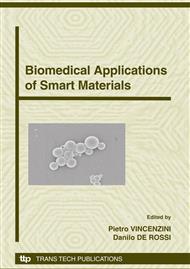p.182
p.188
p.195
p.204
p.210
p.216
p.220
p.226
p.235
Towards an Integrated, Fully-Implantable Vestibular Prosthesis for Balance Restoration
Abstract:
Neuroprosthetics is a relatively new topic but it has already shown its potential. Since the application of this science, it has already significantly improved the quality of life of over 60,000 individuals who previously suffered from severely impaired hearing or total deafness. Today, through use of cochlear implants, children born totally deaf can enjoy going to regular schools and communicating normally. Individuals suffering from dizziness and balance disorders can also benefit from the progress made in cochlear prosthetics. The inner ear's vestibular system provides cues about self-motion and help stabilise vision during movement. Damage to this system can result in dizziness, imbalance, blurred vision and instability in locomotion, a leading cause of death in the elderly. We propose a hybrid CMOS/MEMS platform for bypassing a dysfunctional pathway in individuals that suffer from balance-related disorders. Combining MEMS-based inertia sensing with CMOS-based neural monitoring and processing electronics, this prosthesis aims to deliver a corrective artificial stimulus to the vestibulocochlear (VIII) nerve. We describe a novel system outlining the architectural aspects and implementation methodology used in the design.
Info:
Periodical:
Pages:
210-215
Citation:
Online since:
September 2008
Authors:
Keywords:
Price:
Сopyright:
© 2008 Trans Tech Publications Ltd. All Rights Reserved
Share:
Citation:


